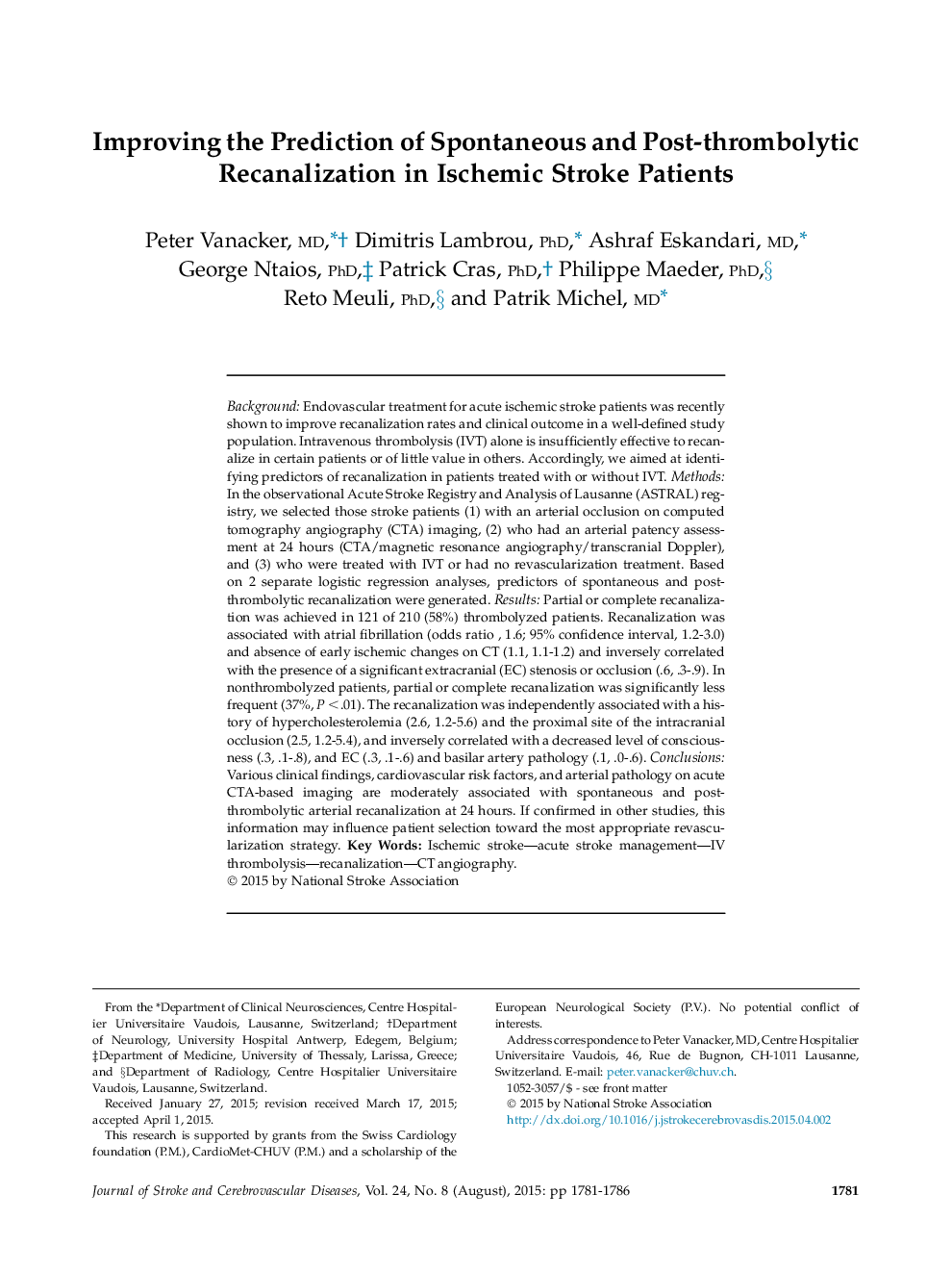| کد مقاله | کد نشریه | سال انتشار | مقاله انگلیسی | نسخه تمام متن |
|---|---|---|---|---|
| 5874957 | 1144992 | 2015 | 6 صفحه PDF | دانلود رایگان |
BackgroundEndovascular treatment for acute ischemic stroke patients was recently shown to improve recanalization rates and clinical outcome in a well-defined study population. Intravenous thrombolysis (IVT) alone is insufficiently effective to recanalize in certain patients or of little value in others. Accordingly, we aimed at identifying predictors of recanalization in patients treated with or without IVT.MethodsIn the observational Acute Stroke Registry and Analysis of Lausanne (ASTRAL) registry, we selected those stroke patients (1) with an arterial occlusion on computed tomography angiography (CTA) imaging, (2) who had an arterial patency assessment at 24Â hours (CTA/magnetic resonance angiography/transcranial Doppler), and (3) who were treated with IVT or had no revascularization treatment. Based on 2 separate logistic regression analyses, predictors of spontaneous and post-thrombolytic recanalization were generated.ResultsPartial or complete recanalization was achieved in 121 of 210 (58%) thrombolyzed patients. Recanalization was associated with atrial fibrillation (odds ratio , 1.6; 95% confidence interval, 1.2-3.0) and absence of early ischemic changes on CT (1.1, 1.1-1.2) and inversely correlated with the presence of a significant extracranial (EC) stenosis or occlusion (.6, .3-.9). In nonthrombolyzed patients, partial or complete recanalization was significantly less frequent (37%, PÂ <Â .01). The recanalization was independently associated with a history of hypercholesterolemia (2.6, 1.2-5.6) and the proximal site of the intracranial occlusion (2.5, 1.2-5.4), and inversely correlated with a decreased level of consciousness (.3, .1-.8), and EC (.3, .1-.6) and basilar artery pathology (.1, .0-.6).ConclusionsVarious clinical findings, cardiovascular risk factors, and arterial pathology on acute CTA-based imaging are moderately associated with spontaneous and post-thrombolytic arterial recanalization at 24Â hours. If confirmed in other studies, this information may influence patient selection toward the most appropriate revascularization strategy.
Journal: Journal of Stroke and Cerebrovascular Diseases - Volume 24, Issue 8, August 2015, Pages 1781-1786
